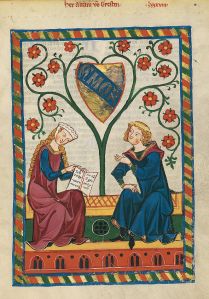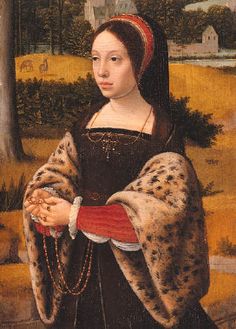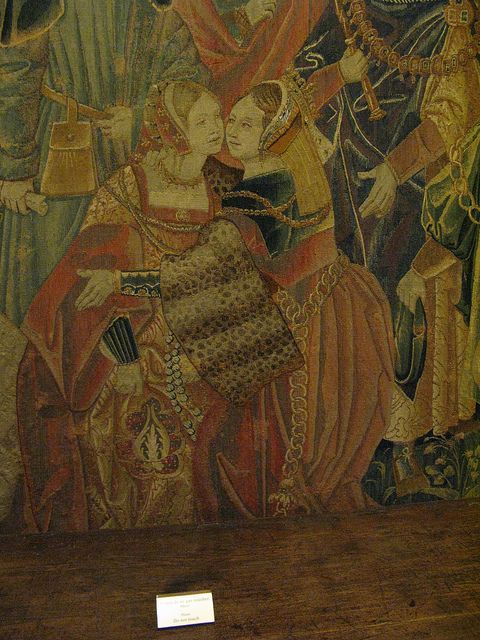And now, something else completely different: in which I research a costume that isn’t for me. (Update: I’m not sure the images linked to bigger versions before; I believe I have now fixed that.)

Royal Armouries MS I.33, also called the Walpurgis Fechtbuch, is the oldest extant European treatise on combat. The thing that really makes it memorable, however, is the page shown here, in which a woman, called Walpurgis (on the left in both pairs), is learning swordfighting from the priest who seems to be the master of the book.
So… if one wanted to dress like Walpurgis, where to begin?
The manuscript is from Germany in the 1320s. Unfortunately, that’s far enough back that it’s not as easy to focus on a specific decade, but in this case I’ve already got a leg up in having a specific image to start from, rather than a person or event. So I can say off the bat, based on Walpurgis’s shoulders and sleeves being different colors, that I need to find out about long-sleeved underdresses (cottes) and sleeveless but not sideless surcoats (or surcottes). They’ll have full-length skirts; Walpurgis is sporting a lovely calf-length look because, like the priest, she has tucked her skirts up into her belt to keep them away from her feet. (Fun fact: tucking robes up for swordfighting may be why Robin Hood’s clerical friend was called Friar Tuck.)
So. I know what she’s wearing, but it would be nice to have more pictures, especially showing the torso area where all the complicated sewing will happen. And anyway, look at that priest’s arms; would you trust this artist on fine details of fashion?
As it happens, I’m in luck: there is a manuscript from the first quarter of the 14th century which is about German writers of love songs.
 The Codex Manesse has lots of pictures, many featuring women in sleeveless surcoats and long-sleeved dresses of contrasting colors. Here’s one of a woman with similar fashion sense to Walpurgis: she’s added a headdress that is actually a fillet or gebende and not at all called a “pie-crust hat”, but she has the same sleeveless overdress and long, curly hair.
The Codex Manesse has lots of pictures, many featuring women in sleeveless surcoats and long-sleeved dresses of contrasting colors. Here’s one of a woman with similar fashion sense to Walpurgis: she’s added a headdress that is actually a fillet or gebende and not at all called a “pie-crust hat”, but she has the same sleeveless overdress and long, curly hair.
There are a bunch of examples of this style in the Codex, showing the fashion in different postures, in motion, and so on. There is also some variation in the arm-hole size in the sleeveless surcoats.
Also let’s just look at a lot of pages because this has to be the most adorable medieval manuscript ever. Sure, war bunnies on snails are cute, but… look at these couples! (Click through for more pages, and a selection of reconstructed dresses and useful links.)
Continue reading “1320s dress” →





